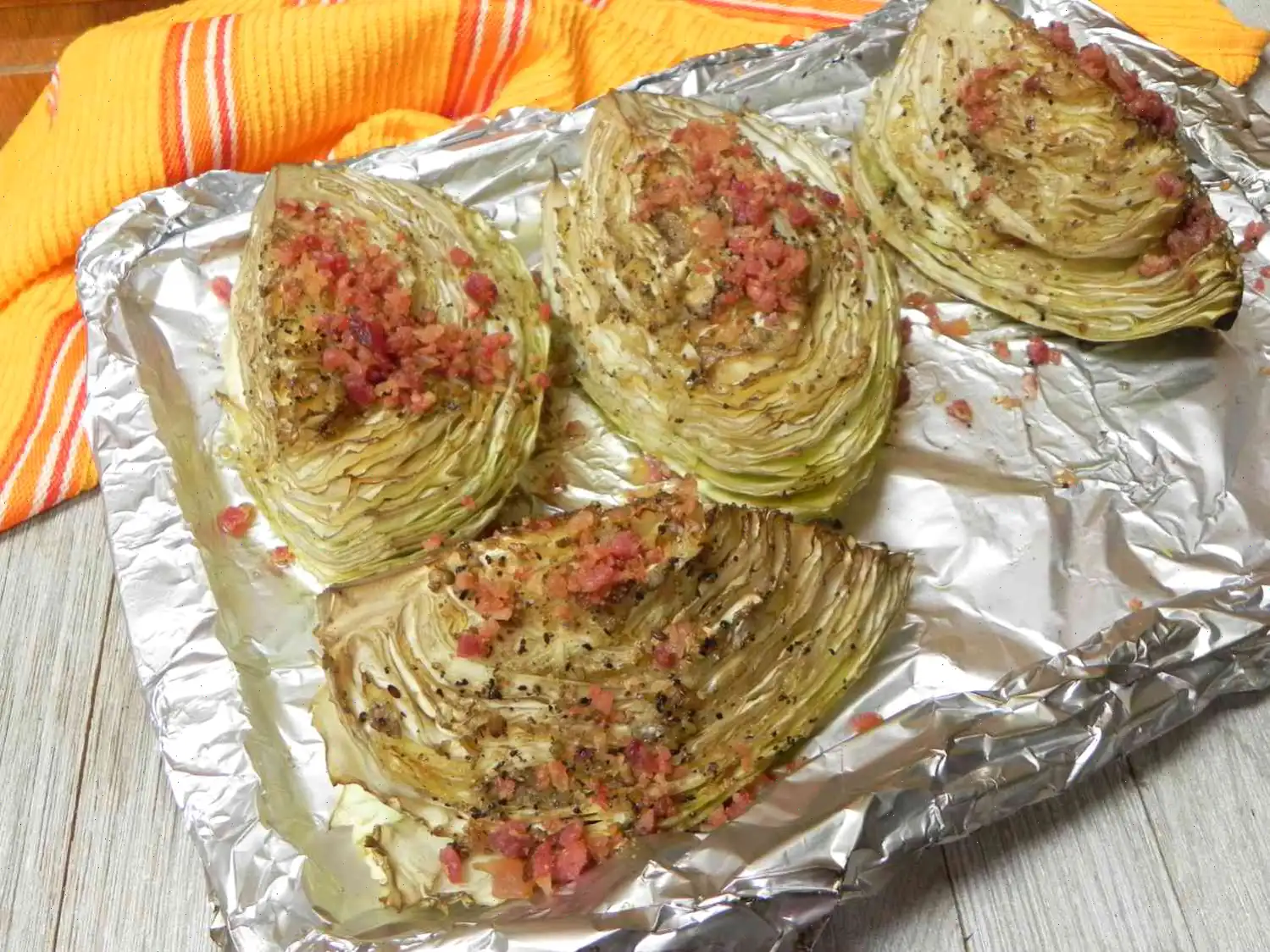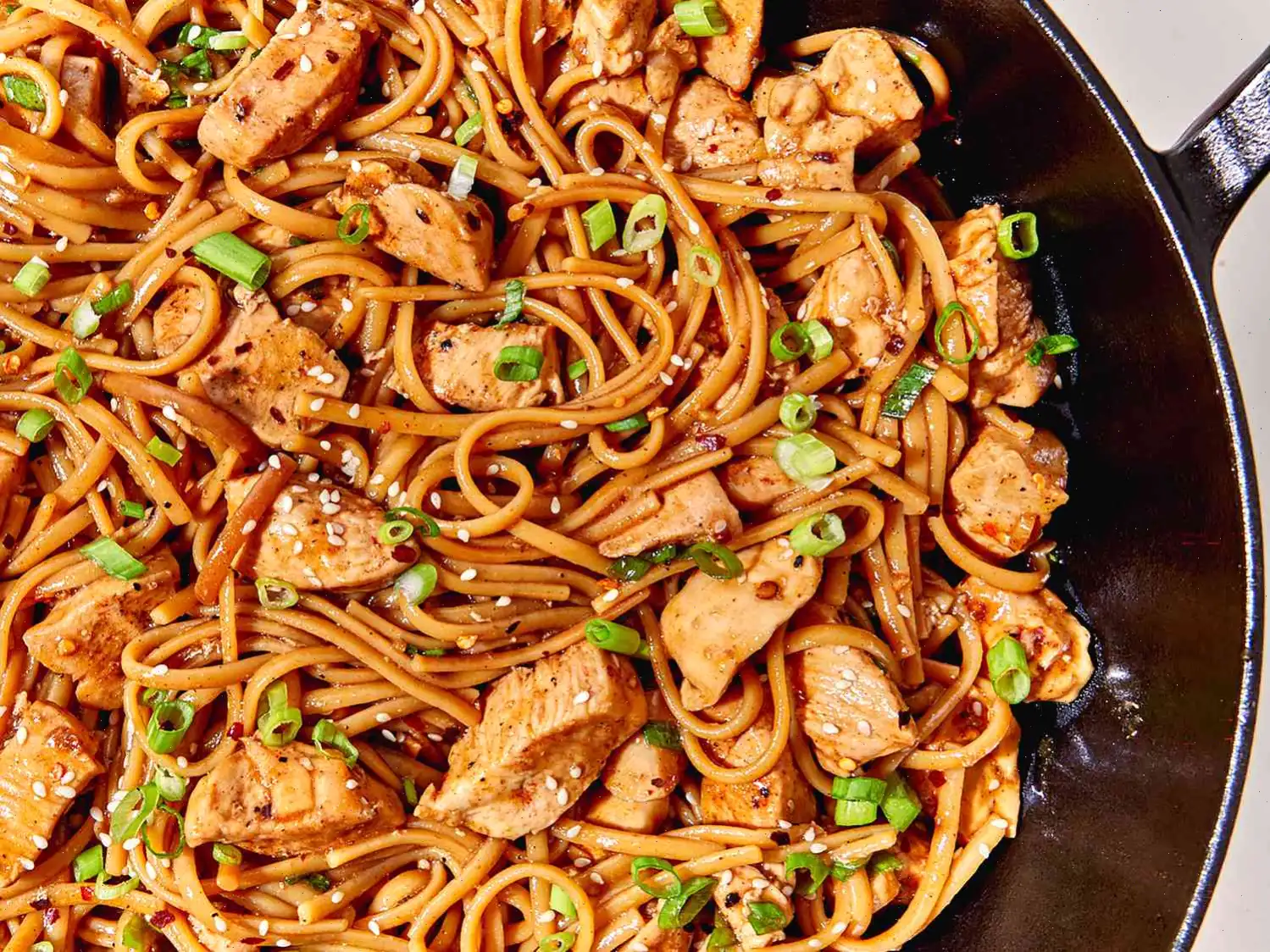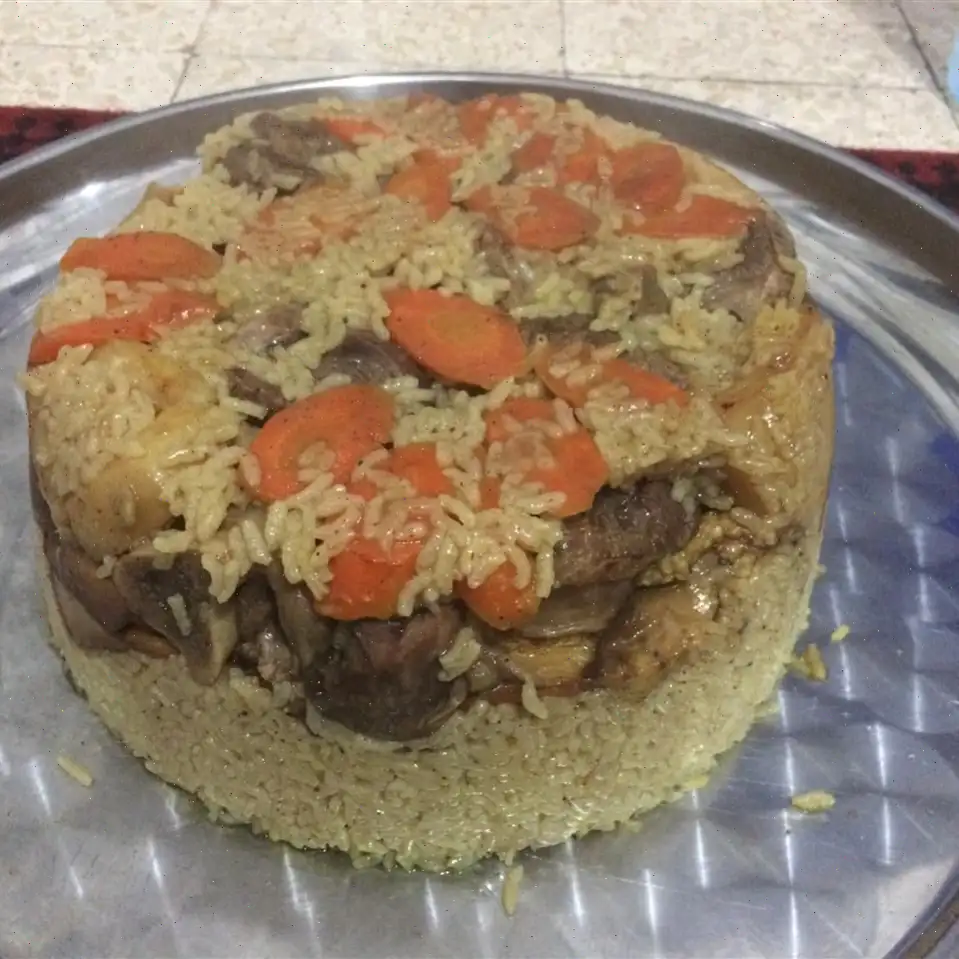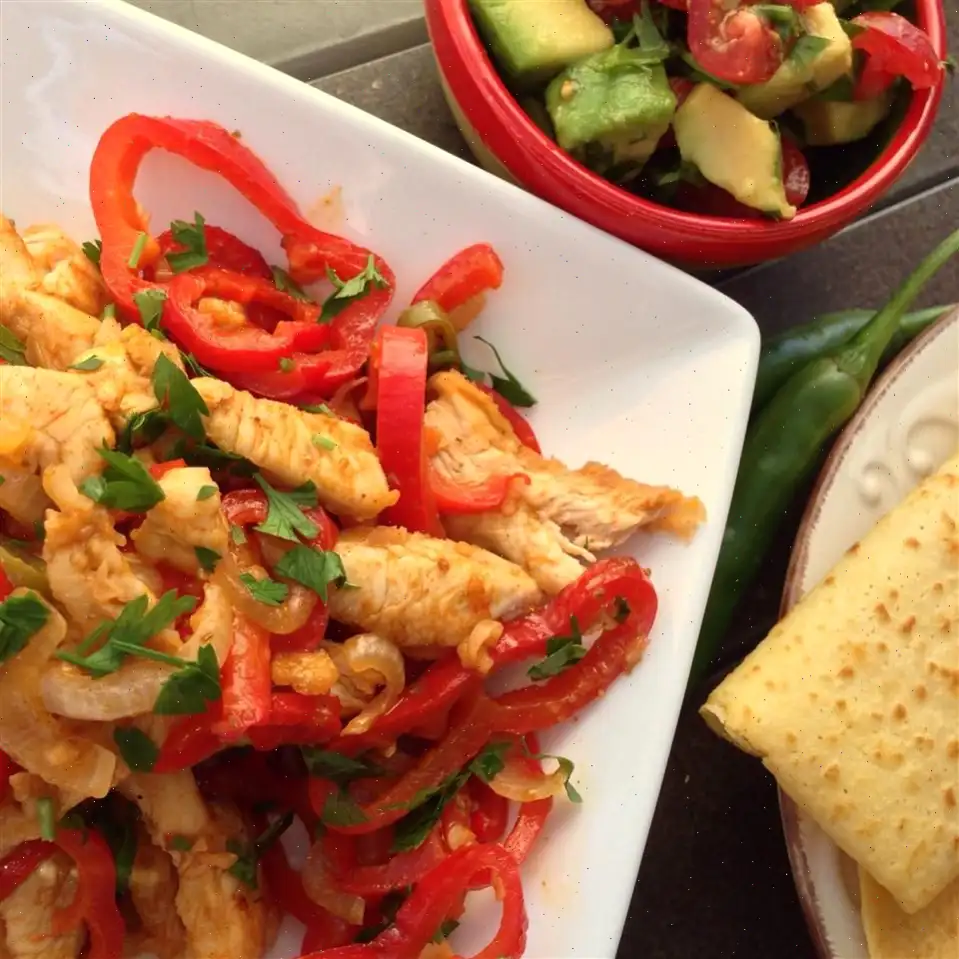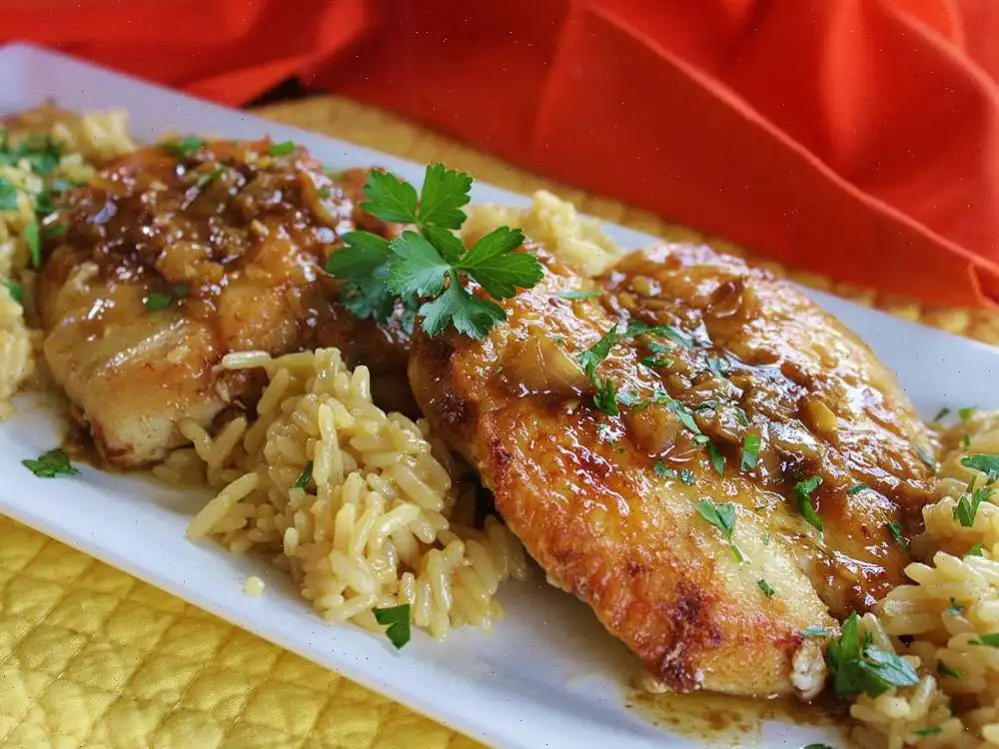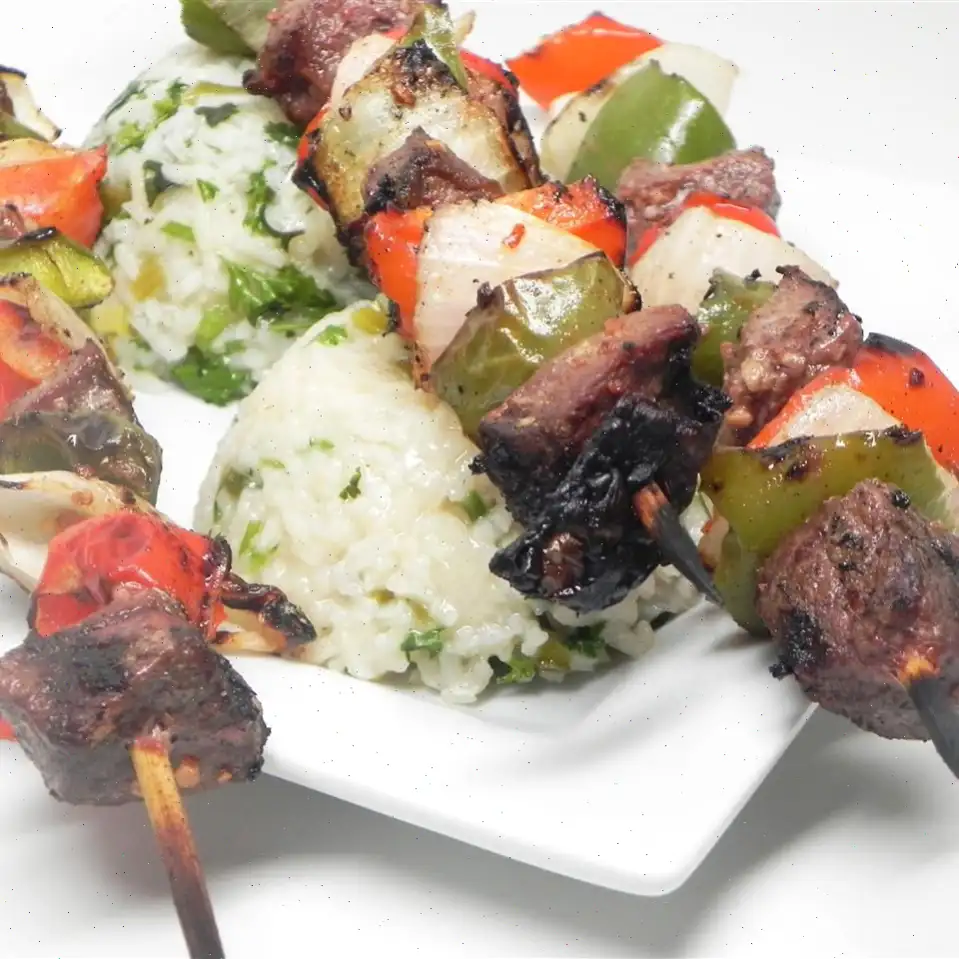
Smoked Cabbage Recipe
Ingredients
- 1 small head green cabbage, quartered
- 1/2 cup olive oil
- 1 teaspoon Montreal steak seasoning
- 1/2 teaspoon salt
- 1/4 teaspoon ground black pepper
- 1/4 cup real bacon bits
Directions
Step 1: Preheat your smoker to 250F (120C) according to the manufacturers instructions.
Step 2: Line a baking sheet with aluminum foil to make clean-up easier.
Step 3: Place the quartered cabbage wedges on the prepared baking sheet.
Step 4: In a small bowl, whisk together the olive oil, Montreal steak seasoning, salt, and ground black pepper until well combined.
Step 5: Using a brush, generously coat the cabbage wedges with the seasoning mixture.
Step 6: Place the baking sheet on the grate of the preheated smoker and smoke for 1 1/2 hours. The cabbage should become tender and infused with smoky flavor.
Step 7: Once done, transfer the smoked cabbage to a serving dish and top with the real bacon bits.
Step 8: Serve immediately while hot and enjoy!
Nutrition Facts
| Per Serving | Amount |
|---|---|
| Calories | 346 |
| Total Fat | 29g (37% Daily Value) |
| Saturated Fat | 4g (20% Daily Value) |
| Cholesterol | 0mg (0% Daily Value) |
| Sodium | 535mg (23% Daily Value) |
| Total Carbohydrate | 20g (7% Daily Value) |
| Dietary Fiber | 7g (24% Daily Value) |
| Total Sugars | 9g |
| Protein | 6g (13% Daily Value) |
| Vitamin C | 118mg (132% Daily Value) |
| Calcium | 161mg (12% Daily Value) |
| Iron | 1mg (4% Daily Value) |
| Potassium | 637mg (14% Daily Value) |
Note: Percent Daily Values are based on a 2,000-calorie diet. Your daily values may be higher or lower depending on your calorie needs.
History of Smoked Cabbage
The origins of smoked cabbage reach back to traditional methods of food preservation practiced in rural communities across Europe and North America. Before refrigeration, smoking vegetables was a clever way to extend their shelf life and enrich their flavor. Cabbage, already prized for its hardiness and versatility, naturally found its place in smokehouses alongside meat and fish. Over time, this technique evolved from necessity to culinary preference, becoming a beloved element in rustic and homestyle cooking.
Regional Variations
Smoked cabbage takes on unique characteristics depending on the region. In the American South, it is often infused with hickory or applewood, producing a sweet and earthy aroma that complements barbecue dishes. In Eastern Europe, cooks may use hardwoods such as oak or beech to create a deeper, more robust flavor profile. Some modern chefs blend global influences by adding spices inspired by Middle Eastern or Asian cuisines, showing how adaptable the dish remains across cultures.
How It Differs from Similar Dishes
While many cabbage preparationssuch as roasted, grilled, or braised versionsrely on heat to develop sweetness, smoked cabbage introduces an additional layer of complexity through prolonged exposure to aromatic wood. This technique concentrates the vegetables natural juices while lending a subtle smokiness that cannot be replicated by conventional roasting. Unlike fermented cabbage dishes, which develop tang through microbial action, smoked cabbage retains its mild flavor yet gains depth from the slow-smoking process.
Where It Is Commonly Served
Smoked cabbage is frequently served at barbecue gatherings, outdoor cookouts, and smokehouse-style restaurants. It pairs exceptionally well with smoked meats, grilled sausages, or hearty casseroles. In some modern farm-to-table restaurants, it appears as a seasonal side dish, highlighting fresh local produce prepared with simple yet bold techniques. Its versatility allows it to fit comfortably into both casual and upscale dining environments.
Interesting Facts
One fascinating aspect of smoked cabbage is how well it absorbs flavors from different types of wood, making each batch slightly unique. Chefs appreciate the vegetables resilience, as it holds its shape during long smoking sessions while still achieving a tender interior. Additionally, smoked cabbage has recently gained popularity among plant-forward cooks looking for satisfying alternatives to traditional smoked meats. Its growing presence on menus reflects a broader trend toward creative, vegetable-centered dishes that showcase depth and complexity without sacrificing comfort.
FAQ about Smoked Cabbage Recipe
Comments
Patrick White
04/12/2023 08:13:24 PM
After smoking for 3 hours, the dish was still undercooked and needed an additional 20 minutes of steaming after being taken out of the smoker. However, the pork butt itself was cooked perfectly, indicating that the temperature was appropriate. I had high hopes for this meal, especially since it is a specialty at one of my favorite restaurants.


